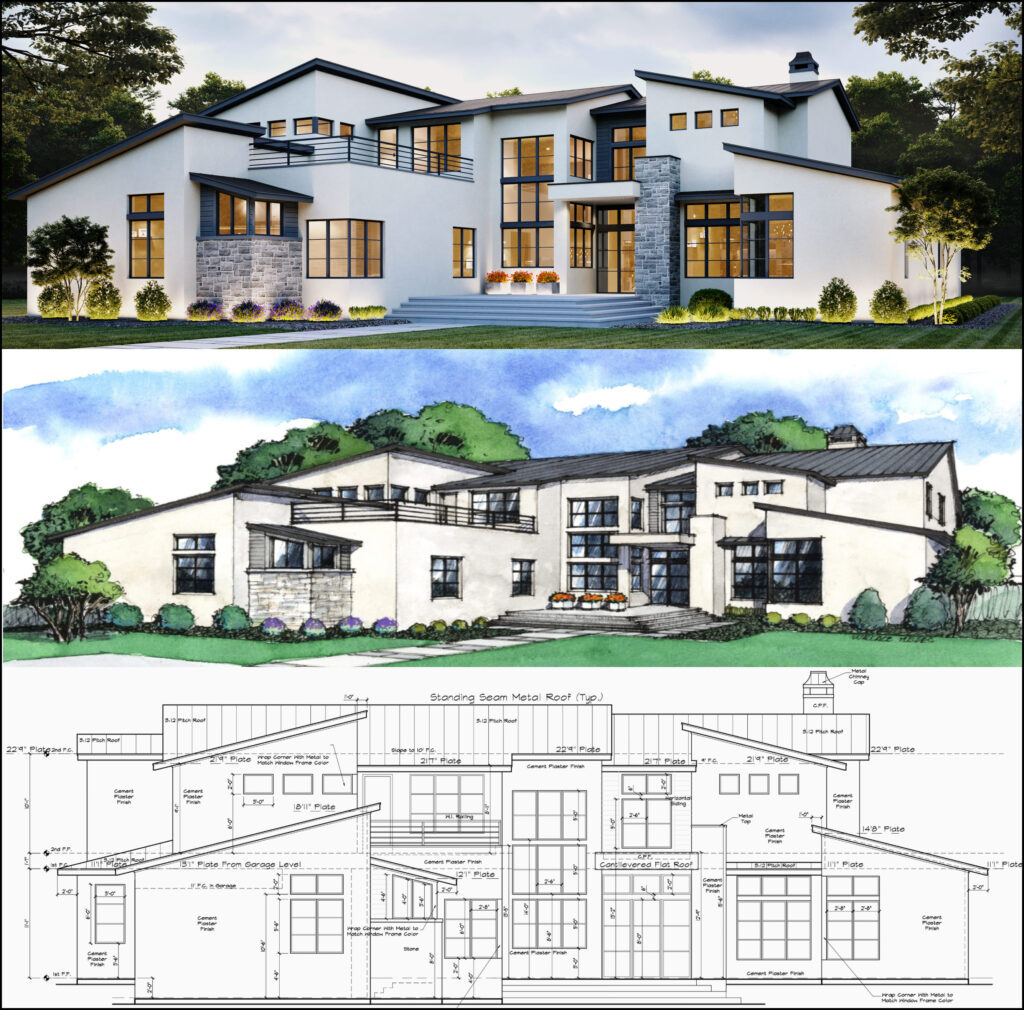Leading Factors to Select CDA Architects for Your Residential or Commercial Styles
Leading Factors to Select CDA Architects for Your Residential or Commercial Styles
Blog Article
Understanding the Collaborative Refine In Between Engineers and Designers in Modern Building Projects
The collaborative procedure between designers and designers is vital in modern-day building tasks, as it harmonizes style intent with design feasibility. Checking out these characteristics reveals insights that could dramatically impact job end results and overall market criteria.
The Significance of Partnership
The collaborative harmony in between architects and engineers is crucial for the successful awareness of any kind of construction project. This partnership brings with each other distinctive expertise and perspectives, allowing the combination of ingenious layout with practical engineering options. By interacting, designers and engineers can ensure that a project not just fulfills visual and practical demands but also complies with safety and security, sustainability, and financial restrictions.
Cooperation cultivates a shared vision, facilitating the placement of objectives and assumptions from the outset. This positioning is important in attending to prospective challenges and mitigating threats that can develop throughout the task lifecycle. In addition, a joint technique permits the effective allowance of resources, optimizing both time and cost.
The significance of collaboration encompasses the repetitive procedure of design and construction, where responses from designers can notify architectural choices, causing even more possible and sustainable styles. On the other hand, architects can motivate designers to think artistically regarding how to attain architectural integrity without endangering creative intent. Ultimately, the joint connection between engineers and engineers is not just helpful; it is fundamental to the development of top quality, useful, and ingenious constructed atmospheres that meet the requirements of society.
Communication Strategies and Tools
Reliable communication strategies and devices are vital for promoting partnership in between architects and designers throughout the project lifecycle. Establishing clear networks of communication is crucial to guarantee that all staff member are straightened with job goals, timelines, and responsibilities. Routine conferences, both in-person and virtual, offer possibilities for stakeholders to discuss development, address problems, and make informed decisions.
Using project monitoring software, such as BIM (Building Info Modeling) systems, enhances collaboration by allowing real-time sharing of layout modifications and technological requirements. These tools help with openness, permitting engineers and designers to visualize modifications and examine their influence on the total project.

Shared Goals and Job Vision
:max_bytes(150000):strip_icc()/Buildingdesigns-GettyImages-912482942-db55b3af711044a3a42ad1040c6711a9.jpg)
Establishing common objectives includes open discussion and a comprehensive understanding of each technique's contributions. Designers typically concentrate on design intent, spatial relationships, and customer experience, while engineers highlight structural honesty, systems functionality, and compliance with guidelines (cda architects). When these perspectives are lined up, the outcome is a cohesive job that sticks to both creative ambitions and technological feasibility
Additionally, a distinct task vision fosters accountability among staff member, urging each participant to take ownership of their function in attaining the wanted outcome. Regular check-ins and collaborative workshops can even more strengthen this dedication, permitting changes to be made as the task evolves. Ultimately, a shared vision not only boosts teamwork however likewise raises the top quality of the last deliverable, bring about effective task conclusion.
The Duty of Modern Technology
Leveraging innovation has actually become vital in boosting collaboration between engineers and designers. Structure Details Modeling (BIM) stands out as a pivotal innovation, permitting both engineers and engineers to create comprehensive 3D designs that envelop layout intent and architectural integrity.
Furthermore, cloud-based platforms allow smooth cooperation, allowing project stakeholders to access and update job data from anywhere. This promotes a society of openness and responsibility, as adjustments can be tracked and the original source assessed in real-time. In addition, mobile applications more boost interaction, giving on-site groups with prompt accessibility to project specifications and updates.
Emerging technologies such as expert system and artificial intelligence are also beginning to contribute in anticipating evaluation, aiding groups determine prospective concerns prior to they develop. Eventually, the role of technology in architecture-engineering collaboration not just boosts process effectiveness but also boosts advancement, causing more successful task outcomes. By embracing these technical improvements, architects and designers can make sure a more cohesive and effective collective process throughout the building and construction lifecycle.
Instance Research Studies in Successful Collaborations
Numerous situation research studies highlight the profound impact of efficient collaborations in between architects and engineers on project results. One notable instance is the partnership on the High Line in New York City City, where landscape designers, engineers, and urban coordinators functioned click here for more info together to transform a deserted railway right into a vibrant public park. This multidisciplinary approach not just boosted the visual quality yet likewise guaranteed architectural safety and security and environmental sustainability.
One more exemplary situation is the layout and construction of the Sydney Opera House. The partnership between designer JÃ ¸ rn Utzon and architectural designer Ove Arup exemplified ingenious problem-solving. Their partnership enabled the iconic shell-like design while attending to complex design difficulties, inevitably causing an ageless building work of art.
The Burj Khalifa in Dubai better shows the value of joint initiatives. Your Domain Name cda architects. The integration of style and engineering expertise made it possible for the task group to accomplish extraordinary elevations while adhering to safety guidelines and aesthetic vision
These instances underscore the importance of interaction, depend on, and shared objectives. In today's intricate construction environment, such partnerships are important to navigating difficulties and providing jobs that fulfill both functional and visionary goals.
Conclusion
To conclude, the partnership in between architects and designers is necessary for the success of modern-day building and construction tasks. Reliable interaction strategies, a common project vision, and the assimilation of sophisticated innovations are crucial parts that facilitate this collaboration. By fostering a culture of responsibility and leveraging tools such as Structure Information Modeling (BIM), teams can browse job intricacies, ensuring that aesthetic, functional, and sustainability objectives are achieved. Inevitably, this synergy leads to innovative and effective project results.
Report this page